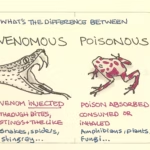Salamanders may look harmless, but some species secrete toxins that can pose serious risks to predators—and even humans. When kept in captivity, these toxic salamanders require specialized care to keep both the animals and their owners safe. Understanding the dangers and adapting proper safety practices is crucial for anyone considering these unique, slippery pets.
Why Are Some Salamanders Toxic?
Toxicity in salamanders serves as a natural defense mechanism. Many toxic species produce harmful substances through specialized skin glands, which they release when threatened. These toxins often cause skin irritation, paralysis, or even death if ingested by predators.
The fire salamander (Salamandra salamandra), for example, can secrete a toxin known as samandarin—a potent neurotoxin. This chemical defense protects the salamander from predators, but it also means human keepers need to handle these pets with care.

Are Captive-Bred Salamanders Still Toxic?
Interestingly, toxic salamanders bred in captivity can retain some level of toxicity, although this often depends on their diet and genetic factors. Wild-caught individuals tend to be more toxic than captive-bred ones, largely because they encounter toxin-producing prey in the wild.
However, even captive-bred toxic salamanders should be handled with caution. Their skin can still produce mild irritants, especially if they feel stressed or threatened. This is why proper enclosure management and limited handling are highly recommended.
Handling and Safety Guidelines
If you plan to keep toxic salamanders in captivity, following safe handling practices is essential to protect both yourself and your pet:
- Wear gloves when cleaning or rearranging their habitat.
- Avoid direct contact with your hands, especially around the eyes, nose, or mouth.
- Wash your hands thoroughly after any enclosure maintenance.
- Keep the enclosure covered and secure, especially if you have children or other pets.
- Educate all household members about the risks associated with toxic species.
Ideal Enclosures for Toxic Salamanders
The best way to ensure both safety and comfort for toxic salamanders is to mimic their natural habitat while maintaining secure boundaries:
- Use moist, non-toxic substrate to maintain humidity.
- Provide hiding spots, like cork bark or hollow logs, to reduce stress.
- Install a tight-fitting lid to prevent accidental escapes.
- Monitor temperature and humidity to match the species’ natural environment.
Why Keep Toxic Salamanders?
Despite the risks, many exotic pet enthusiasts appreciate toxic salamanders for their fascinating biology, unusual defense mechanisms, and attractive appearance. From the bright yellow spots of the fire salamander to the smooth, secretive behavior of newts, these amphibians offer a unique experience for experienced keepers willing to respect their toxicity.
Conclusion
Toxic salamanders in captivity are undeniably intriguing, but they are not pets for the unprepared. With the right knowledge, safety measures, and habitat setup, you can safely enjoy these captivating creatures while keeping yourself and your household safe. By understanding their defensive nature and handling them carefully, you can appreciate their beauty without falling victim to their natural defenses.




